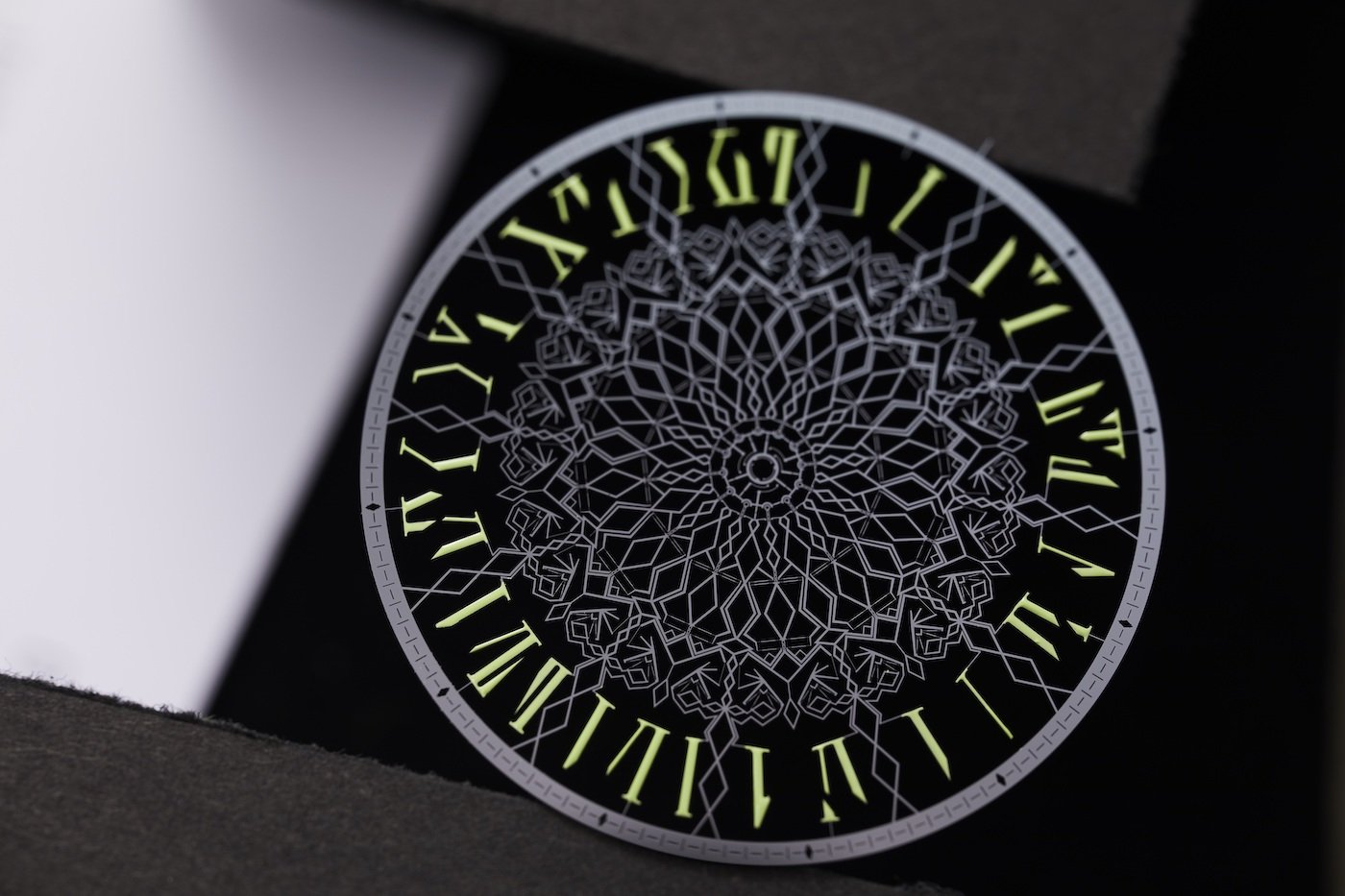t’s difficult to avoid being transported back to childhood when presented with the “living dials” developed by the CSEM, a major microtechnology research centre based in Neuchâtel (where the silicon escapement was developed). In one instance, stardust gathers with the passage of time, creating landscapes on the dial, in the form of poetic motifs representing the phases of the moon. In another, deconstructed motifs come together to form the indexes of the watch as the hour hand passes by.
Frédéric Loizeau, in charge of technology transfer at CSEM, presents this innovation with enthusiasm: “We have been working on flexible components for several decades now as part of our collaboration with the space industry. By combining our know-how in aerospace, silicon and horology, we have succeeded in designing a mechanical complication that simply ‘sits’ on the dial and allows animations to be triggered thanks to a system of cams, rods and contact points.”
As thin as a sheet of paper, this monolithic silicon module is made up of no fewer than 384 deformable elements – that is, 32 parts per animation, on a dial with 12 indexes. “The value of this innovation lies in the contrast between its apparent simplicity – everything is visible on a single layer – and the striking observation that there are no cogs,” the manager emphasises. “The mechanism itself is magical to the enthusiast: you don’t know how it works.” These new complications are compatible with any mechanical movement, as long as they can connect to the right component.
The concept of a monolithic part with flexible elements has been used for decades in the space industry, as it avoids friction or fatigue.
-

- “Moon Dust”: The dial is composed of hundreds of stars. Some of them come together to form the current moon phase.
Forming and deforming
Without necessarily knowing it, we use a similar, albeit more rudimentary, flexible technique every day when we uncap our shampoo or Tic Tac box: in both cases, a single piece of plastic is opened by deformation. The mechanisms developed by the CSEM work on the basis of forming – and then deforming – the flexible components to create the desired patterns. The use of silicon is essential in order to work with the required precision, in the micron range.
Although it employs an innovative material and principles used in aerospace, this “dial automaton” also has a direct, horological connection with the 18th century, and the automata of Jaquet-Droz, since it is based on a similar system of cams that transmit information about the animation.
Without necessarily knowing it, we use a similar, albeit more rudimentary, flexible technique every day when we uncap our shampoo or Tic Tac box.

A poetic soul
Francis Cardot, a researcher at the CSEM, imagined and developed this concept from scratch, with the idea of bringing a different, more poetic soul to watch displays. Finishing touches can be applied to the motifs thus created, for example in the form of miniature paintings. “With this new type of complication, the creative possibilities for watchmakers are almost infinite,” states Frédéric Loizeau.
Following initial consultations on this innovation within the watch industry, the CSEM is considering creating a separate entity to pursue its development and bring it to market. Frédéric Loizeau assures us that industrialising this technology will make it possible to boost the creativity of any brand.
“With this new type of complication, the creative possibilities for watchmakers are almost infinite.”






















































